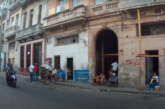On July 25, 1952, in front of a crowd waving American and Puerto Rican flags, Puerto Rico Gov. Luis Muñoz Marin officially raised the Puerto Rican flag for the first time. That day, the constitution — and with it, the Commonwealth of Puerto Rico — was put in place. But will this now-highly-debated status endure the test of time?
The commonwealth, officially known in Spanish as the Estado Libre Asociado de Puerto Rico, still stands — proudly to some, shamefully to others.
Muñoz Marin was the first governor elected by Puerto Ricans, and he is credited with the creation of this arrangement which has made Puerto Rico part of the United States of America — though not a state.
The establishment of the Estado Libre Asociado de Puerto Rico
Shortly after he received 61 percent of votes and took office, Muñoz Marin tackled the status dilemma. The governor preferred a solution between statehood and independence that would give Puerto Rico sovereignty.
In Washington, D.C., the island’s representative in Congress — Resident Commissioner Antonio Fernos Isern — introduced a bill in March 1950 to the House of Representatives, asking the U.S. for authorization for Puerto Ricans to redact their constitution. Four months later, that bill became U.S. Public Law 81-600, which the people of Puerto Rico voted to approve in a referendum in June 1951.
The constitution was redacted, approved by a constitutional assembly one year later, in February 1952. Then Puerto Ricans voted to approve that constitution in March 1952. It went to Congress for approval, and finally, President Harry S. Truman ratified it on July 3. It went into effect three weeks later.
Read more: http://www.voxxi.com/commonwealth-puerto-rico-statehood/#ixzz2a43NO8SK
Comments
Powered by Facebook Comments



